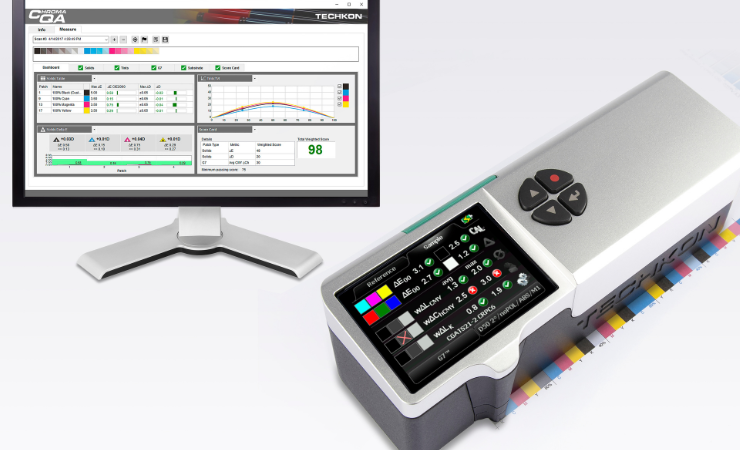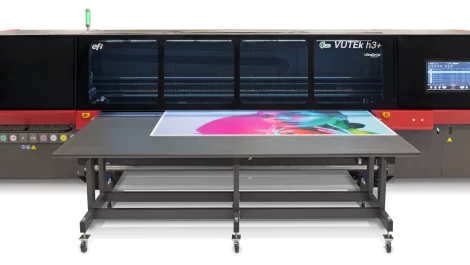Techkon has introduced an update to its SpectroDens 4 spectrodensitometer instrument, with new features that include the ability to measure optical brightening agents (OBAs) used in papers, visual opacity of white inks/toners and solid ink density, generating printing curves and checking conformance to G7 colour standards.
The all-in-one handheld colour measurement device is also said to be able to guide press operators to achieving the lowest delta-E values, via specific density adjustments to achieve the best possible colour match.
The German-headquartered company points out that OBAs have a significant effect not only on how people perceive paper under different lighting, but also on the results of putting ink down during the printing process. SpectroDens 4’s measurement function, OBA-Check, provides information about the intensity of the optical brightening agents used and the shade of the paper.
‘This is extremely useful information in today’s print market where printers are finding it increasingly difficult to locate paper and need to purchase paper from a wider variety of suppliers just to keep their presses running. With OBA-Check, a printer can measure and know the amount of OBAs in each stock and understand how the colour appearance will be affected in different viewing environments,’ David Strand, VP of marketing at Techkon USA, told Digital Printer.
The company also claims that SpectroDens 4 is the first colour measurement instrument to quantify the visual opacity of printed white ink or toner, allowing users to measure and monitor opaque white’s ‘hiding power’, something specified in ISO 23498:2020 and historically a challenge for digital printers.
‘[This] is critical in all conventional or digital printing applications that lay down white ink when printing on clear, metallic or speciality substrates, or when printing metallic inks,’ noted Mr Strand. ‘It creates a base layer on which the next ink is laid. Basic printing principles don’t typically account for ‘white first’, so, as it is effectively ‘hiding’ underneath, it has to be factored in appropriately to achieve the ideal colour match(es) needed on the final product.’
Measuring white opacity requires four measurements of ink drawdown on a black and white contrast card. These are interpolated by the SpectroDens 4 spectrodensitometer and provide the user with the white ink’s ability to reduce the effect of the substrate. This avoids press operators guessing, which can lead to longer make-ready times in analogue print and unnecessarily wasted substrate materials and ink in digital.
Additional features of the SpectroDens 4 include a GrayGuide that displays a G7 pass/fail indication, and the specific CMYK density adjustments needed. It can also scan a control wedge in seconds to confirm proofs against ISO 12647-7 and known datasets like Gracol, Swop3, Swop5, Ifra, Ugra/Fogra and G7. The machine can create, edit, and manage colour libraries, import/export colour data, generate pass/fail QC reports, and manage the instrument, all via onboard software.



